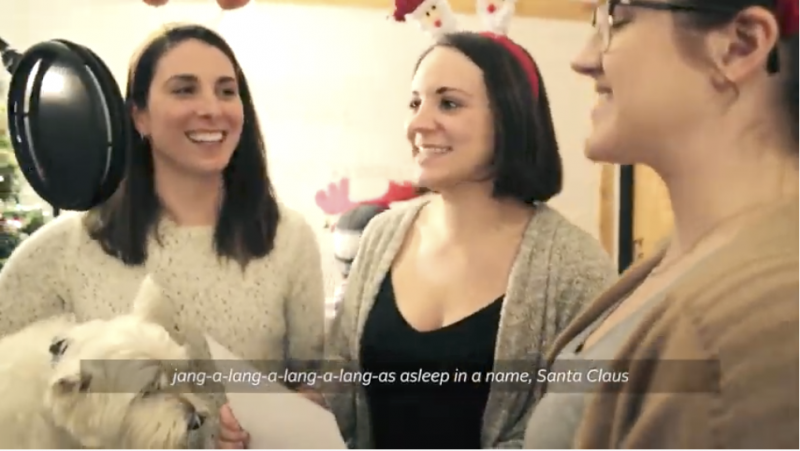AI Develops Creepy Christmas Content, from Songs to Movies
Take an AI neural network, train it with Christmas movie or song titles and related data, and see what happens. It’s an intriguing concept, but the results so far have been both hilarious and disturbing.
At the end of last year, aiweirdness.com wrote about teaching an algorithm to create Christmas movie titles from its use of 300 Hallmark movies as data. The results were both funny and horrifying. Here are the “normal” results:

MIT Technology Review created a graphic to go with its AI’s Christmas movie title.
Christmas Creature Case
Spring Can’s Christmas
A Christmas Cat
A Christmas louse
Close, Christmas
Treehouse Christmas
The Noise of Christmas
The Happy Car
Can Christmas Of PuppY
When Plant Deaal
The Christmas Manury III
Those in the horror category include:
Revenge of Santa
Christmas Rising
Christmas Paranormal
Holiday Manor
A Christmas Comes
Fist of Christmas
The Christmas Dead
A Cry of Christmas
The Haunted Christmas Love
The most inventive of the horror examples? “Predator’s Christmas.”
Ironically, aiweirdness.com research scientist Janelle Shane had inspired MIT Technology Review to imitate her original AI experiment of creating Halloween costumes with AI, crafting Christmas AI movie titles⏤then Shane followed their lead. Some of the results were comedic, to say the least, from “IT Santa,” (Stephen King’s “It”) to “The Christmas Mile,” (which draws from the film “The Green Mile”), and “Fight Christmas,” based on “Fight Club.”
Here are others:
The Christmas Store
Santa Christmas Christmas
The Nighht Claus
I Santa Manta Christmas Porie
Babee Christmas
A Christmas StorK
The Grange Christmas
The Santa Christmas Pastie Christmas
Christmas Caper
A Christmas Mister
The Lick Christmas
Mrack Me Christmas Satra
The Christmas Catond 2
Santa Bach Christmas
Christmas Pinta
Christmas Cast
A Christmas to Come
At least one university and two companies also used AI to create Christmas carols. Unfortunately, they demonstrated a lack of human insight and warmth that only a computer could appreciate.
Way back in 2016, the University of Toronto’s AI department started the fun, according to a story on nvidia.com, which said the researchers used an image of a Christmas tree to inspire a neural network to write a Christmas song.
“With the help of CUDA, Tesla K40 GPUs and cuDNN to train their deep learning models, the researchers trained their neural network on 100 hours of online music. Once trained, the program can take a musical scale and melodic profile and produce a simple 120-beats-per-minute melody — it then adds chords and drums.”
A story on the university’s website described the project and its founders:
“University of Toronto researchers Raquel Urtasun, an associate professor in computer science and Canada Research Chair in Machine Learning and Computer Vision, and Sanja Fidler, an assistant professor in computer science, along with PhD student Hang Chu, have trained recurrent neural networks to take a digital photo and turn it into a computer-generated singalong and dance-along.”
The results were vaguely reminiscent of a Christmas song, if one took several examples, threw them in a blender, and poured out this odd concoction. The only way to appreciate the song’s weirdness is to take a listen.
Last year two companies tried to do the same, with slightly worse results.
Swedish AI company Made by AI generated several strangely named songs, according to a story on cnet.com. It used 100 Christmas carols to generate such titles as “Peaches Twinkleleaves” and “Syllabub Chocolatebells.” Here’s a video of a song from dailymail.co.uk.
Here’s another example of a song generated by the creative agency redpepper:
A comment on Digg.com about the U of T neural network expressed the opinion that, “it will haunt your dreams.” Ironically, the posting attracted the attention of a singer/musician named Heath Allyn who to produced his own version of the song. He wrote, “I needed to pay tribute to our robot overlords by recording a full studio production of this, my new favorite xmas carol.”
Here’s a slightly more polished and pleasing humanized version of the University of Toronto experiment, though the lyrics remain bizarre and the flat music sounds just like a computer composed it.
Merry Christmas Piñata!








Leave A Comment